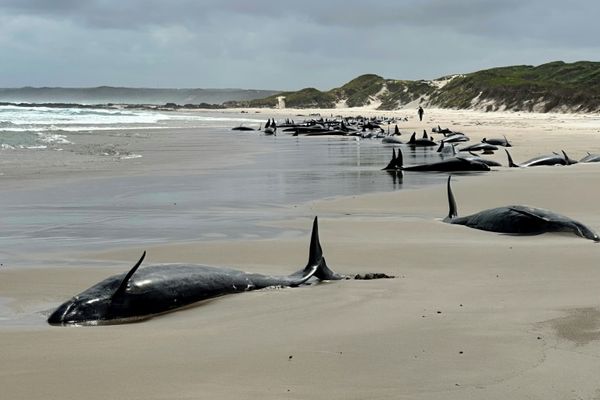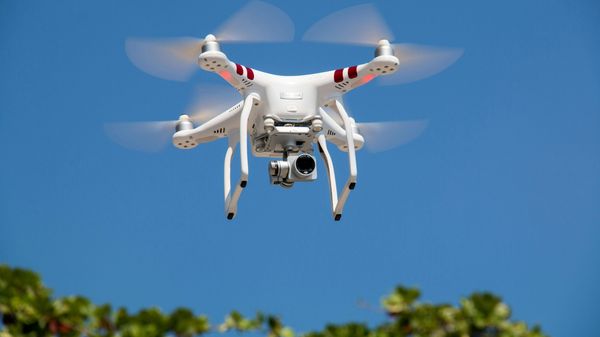Landon Bannister had something of an epiphany after he moved to Tasmania and looked up into the night sky.
"I could see the stars and I went, 'holy s**t'. I hadn't seen stars in, like, 10 years," he said.
"I had forgotten how important they were to me and all these childhood memories and nostalgia sort of comes back."
It was a turning point for Mr Bannister and triggered his campaign to protect Tasmania from the increasing impacts of light pollution.
Ironically, after working as a lighting consultant for two decades, he is now the president of Dark Sky Tasmania.
Mr Bannister said even though Tasmania has some of the darkest skies in the world, they were under threat.
His organisation fears if light pollution continues at its current rate, within two generations Tasmanian children will grow up never having seen a starry night sky.
"This guy tells a story where his friend came out [to Tasmania] with his kids … they drove up the east coast for a couple of nights away and they took them out on the beach that night and looked up [at the] beautiful starry night... and the child started crying," he said.
"He [the child] was petrified.
"He'd just never seen them, and it actually scared him."
Dark Sky Places protected through lighting policies
Dark Sky Tasmania is campaigning for the state's south-west wilderness to be established as a dark sky sanctuary.
There are over 200 Dark Sky Places globally certified by the International Dark Sky Association, including three in Australia.
The areas are protected through responsible lighting policies and public education.
Late last year, Dark Sky Tasmania hosted a gathering on the edge of the Esperance River in Southern Tasmania for people interested in the establishment of a Dark Sky Sanctuary.
Pakana woman Theresa Sainty was there.
She said Indigenous people were the first astronomers and saw the stars differently to non-Aboriginal people.
"It is part of who we are," Ms Sainty said.
She supports a push for the protection of the night skies.
"Sea country is being colonised and ruined in the same way that country is being colonised and ruined — and sky country is also," she said.
Lisa Cawthen, who studies bats, said light could act as fences for wildlife.
Dr Cawthen said some species were drawn to light and the insects they attracted.
"That might sound great, it's like the McDonald's for bats, but all of a sudden they're just focusing on consuming insects around those lights," she said.
"Then they're defecating just in that area so they're not spreading all the nutrients out throughout the forest as would naturally occur.
"That's when the environment starts to become unbalanced and we see that across the animal kingdom when it comes to light."
Dr Cawthen said she occasionally took breaks from light by heading into the wilderness and only using a campfire.
"Your body completely re-sets and you will feel a change. You will sleep better. It's just really a powerful experience," she said.
While Mr Bannister accepted that the whole of Tasmania could not be a dark sky sanctuary, he is campaigning for stricter government regulations to reduce light pollution across the country.
"The reason Hong Kong is the most light-polluted city in the world is they compete on brightness, everything keeps getting brighter to stand out more and more against everything else," he said.
"That's what happens in a free market."
He said almost all of New Zealand's LED street lighting was controlled to be dimmed or turned off when people aren't in the space.
While 40 per cent of street lights in Australia had been converted to LED, Mr Bannister said less than 4 per cent had smart control.
"Australians are complacent about light," he said.
"No one is saying go and change every light … you just need to say 'from now on, we're just going to make better decisions'."
Call to take a stand on light pollution
Lighting was not an afterthought when Miriam Shevland designed a new playground at the growing suburb of Kingston in southern Tasmania.
"It was critical that the lighting respected the natural environment," she said.
The dark sky-friendly lighting is at a lower level of intensity, directed to the ground and is spaced at the maximum allowable distance apart.
"You can still see your face and have facial recognition and feel that general feeling of safety but it respects that animals that are nearby and doesn't disrupt their life cycles," Ms Shevland said.
Mr Bannister is encouraging all Australians to take a stand on light pollution.
"If you see someone put up a big floodlight, if you see your council doing the wrong thing then write a letter, send an email," Mr Bannister said.







